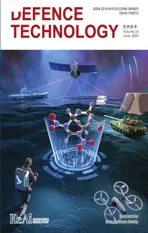Experimental investigation of ultra-early-strength cement-based selfcompacting high strength concrete slabs (URCS) under contact explosions
2023-07-04WeiWngQingHuoJinchoYngJinhuiWngXingWng
Wei Wng , Qing Huo , Jin-cho Yng , Jin-hui Wng , Xing Wng
a Key Laboratory of Impact and Safety Engineering, Ningbo University, Ministry of Education, Ningbo, 315211, Zhejiang, China
b Institute of Defence Engineering AMS, PLA, Luoyang, 471023, China
c Institute of Advanced Energy Storage Technology and Equipment, Ningbo University, Ningbo, 315211, Zhejiang, China
Keywords:Ultra-early-strength concrete slabs Blast load Contact blast Blast-resistant performance
ABSTRACT
1. Introduction
As a typical load-bearing component, reinforced concrete structures are widely used in bridges, houses, water conservancy,hydropower projects and various national defense projects.Because of its functional characteristics,it is also the first choice for various terrorist attacks. Therefore, how to repair buildings and facilities quickly after disasters and improve the anti-blast performance of materials has become a problem that people have to think about. Under blast loads, concrete structures will form craters on the surface, spall off the concrete on the back, and even breach[1—5].In this process,the concrete debris generated by the spalling carries a large amount of kinetic energy, which will pose a huge hazard to the personnel and equipment in the structure[6].Xu et al.[7]study the cracking process of concrete slabs and the distribution of spalled concrete debris under explosive load with numerical simulation method. The secondary disasters caused by concrete spalling cannot be ignored,according to related studies,a fragment with 79 J has a fatality rate of 31% for an adult, and even a fatality rate of 50%and above only requires 103 kJ[8].Therefore,a method that can accurately predict the crater diameter and spalling diameter is of great significance for evaluating the anti-explosive ability of concrete slab components. Hiroyoshi Ichino et al. [9] predicted the critical value of spalling as a function of plate thickness and charge quality, and a prediction equation for local failure depth were also established.Makoto et al.[10]established a function that can predict the crater diameter and spall diameter of the reinforced concrete slab under contact explosive.
People mainly improve the anti-blast performance of concrete from two aspects. On the one hand, people increase the ability to resist explosive loads by adding fiber materials to the concrete.Compared with traditional concrete, the tensile and compressive strength of fiber-added concrete is significantly improved, which can effectively prevent the concrete from cracking, thereby improving the performance of the concrete slab against explosive loads.A.M.Coughlin et al.[11]studied the impact resistance of steel fiber concrete by experiments and numerical simulation,compared with conventional concrete, fiber concrete has higher toughness and impact resistance than conventional concrete. Fiber-added concrete has stronger survivability under explosive loads than traditional concrete[12], fibers can not only reduce concrete spalling, but also increase the quality of concrete spalling debris and shorten the splash distance [13], additionally, fiber attached on both sides performed better in blast resistance[17].Wang et al.[14]found that the addition of the polyisocyanate-oxazolone (POZD)coating greatly improved the plasticity of the concrete slab,and the anti-explosive ability was also enhanced. Due to the existence of the coating, the explosive load can be effectively transmitted,thereby preventing the splash of concrete fragments and improving the viability of the concrete slab under the explosive load [15].Concrete slabs with back surface coating have stronger antiblasting ability than front surface[16].
Because the two methods of adding fiber and sticking coating have many disadvantages,such as high cost,complicated operation,and high maintenance cost, they are not suitable for large-scale promotion in engineering. As a result, people are no longer limited to these two methods, but began to look for new types of concrete with excellent performance, hoping to fundamentally solve the problem of improving the blast resistance of concrete. Li et al. [18]studied the failure mode of ultra-high-performance concrete under explosive load through contact explosion tests, according to the test results, ultra-high-performance concrete has higher tensile and compressive strength, so it performs very well under the effect of explosion.Ngo et al.[19]studied the influence of thickness and reinforcement arrangement on the anti-blast performance of ultra-high performance concrete slabs through experiments, and compared the experimental results with the numerical calculation results, which confirmed the validity of the numerical simulation. Roller et al. [20] proved that the residual bearing capacity of ultra-high performance concrete columns is higher than that of ordinary concrete columns under the same explosive load. Aoude et al. [21] through comparative analysis of the test results, found that the residual displacement of the ultrahigh performance concrete column under the explosion load is relatively small, and the resistance to the explosion shock wave is stronger. Astarlioglu et al. [22] found that the bearing capacity of the ultra-high performance concrete column is 4 times that of the traditional concrete column. Li et al. [23,24]confirmed that ultrahigh performance concrete has excellent mechanical properties no matter under static load or explosive load through a large number of experiments.
With the maturity of the concrete production process, the convenient,efficient,and excellent performance concrete materials have begun to enter people's vision.Felekoglu et al.[25]found that after adding 1.03%—2.5% of alkyl/alkoxysilane, the compressive strength of the concrete after curing for 1 day increased by 40%—60%.Son et al.[26]think that the early strength of concrete can be significantly improved by adding 5%—15% methacrylic acid at -20◦C, and the mechanical properties have been significantly improved. Pichler et al. [27] found that the early strength of concrete developed rapidly at a constant temperature of 60◦C,and the 12 h compressive strength reached more than 60% of the 28 d compressive strength. Wang Houyu et al. [28] carried out an experiment on the dynamic mechanical properties of UR50 ultraearly-strength cement-based self-compacting high-strength concrete materials at high strain rates with large-diameter SHPB,penetration experiment were also conducted. Although related scholars have explored the mechanical properties of ultra-earlystrength concrete, they have not rarely involved the dynamic response of ultra-early-strength concrete under contact explosion.Therefore, this paper studies the failure mode of reinforced concrete slabs made of UR50 ultra-early-strength cement-based materials under contact explosion, and explores the influence of reinforcement ratio and curing time on its anti-explosive performance.
2. UR50 ultra-early-strength concrete material
2.1. Introduction to UR50
UR50 ultra-early-strength cement-based self-compacting highstrength material is an ultra-high performance concrete material.It is a pre-dry mixed powder composed of aggregate, cement, functional mineral powder, nano filler, special modified additives and special steel fiber. The maximum particle size of the aggregate is less than 5 mm.The product is processed and mixed in the factory and packed in bags. The shelf life is about 6 months. After adding water and mixing on site, it has good fluidity, ultra-high strength,ultra-high toughness, ultra-impact resistance and ultra-high durability. Fig. 1 and Fig. 2 shows the microstructure of UR50 super-impact-resistant concrete. Compared with traditional highstrength concrete, its microstructure is greatly improved, pores are eliminated and the nano-microstructure is strengthened.
Under the action of bending and tension load, the load is distributed through the micro-cracks group(Fig.3),Avoid or delay the generation of large cracks,therefore,it has exhibiting excellent toughness. The same principle, under the impact of impact, the impact energy can be effectively dispersed through the micro cracks to avoid impact damage.
Compared with traditional early-strength concrete,UR50 ultraearly-strength cement-based materials use nano-materials,special design of material grading, dry-mixing and pre-dispersing lowproportion components, etc. has improved the strength and durability of concrete greatly, this method makes the concrete microstructure became more dense. The specific proportion is shown in Table 1. In addition, through the use of a specially designed modified additive system, on the one hand, it gives the concrete excellent self-flowing performance.On the other hand,after the cement is set, the hydration process is rapidly increased, in that way,obtaining higher strength in a short period of time provides an excellent solution for rapid structural repair.

Fig.1. UR50 Microstructure diagram of super impact-resistant concrete (50 × ).
2.2. Mechanical properties of UR50
UR50 ultra-early-strength cement-based self-compacting highstrength material is convenient to use, after adding water and mechanical mixing, concrete materials with excellent fluidity, super fast hardening and high strength can be obtained immediately.The amount of water added is 9.3 ± 0.5% of the weight of the dry powder. The slump extension of the mixed concrete can reach 770—830 mm, and the pouring can be self-compacting without vibration.
The early strength of UR50 ultra-early-strength cement-based materials has developed rapidly, the compressive strength can reach 50 MPa in 2 h, The compressive strength reaches 70 MPa in 24 h, even the later compressive strength exceeds 80 MPa, As shown in Table 2.The strength test of UR50 material is carried out by the standard method specified in“Cement Mortar Strength(ISO)Determination Method” (GB/T 17,671—1999) [29]. The dynamic mechanical properties of UR50 ultra-early-strength cement-based materials under different strain rates, and anti-penetration coefficient were reported by Wang et al. [28].
3. Contact-explosion tests
3.1. Explosive charges
The test uses a standard high explosive TNT with an energy density of 4521 kJ/kg.The size of each TNT is 25×50×100 mm3,the size and shape of a single piece of TNT are shown in Fig.4,and the mass is 200 g. From a safety point of view, the amount of explosives in each test is an integral multiple of 200 g,in this way,the dangerous factors caused by cutting explosives can be avoided,and the equivalents are 200 g, 400 g, 600 g and 800 g respectively.Determine the combination of TNT blocks according to the established plan of the test,bond the explosive block into a group charge with scotch tape, the bundled TNT combination is shown in Fig. 5(take 600 g as an example), and an electronic detonator were used to detonate the explosive at the center point.

Fig. 5. Schematic diagram of the completion of TNT drug block bundling.

Fig. 6. Sectional view of the slab (reinforcement ratio is 0.23%): (a) Plan; (b) Section plan.
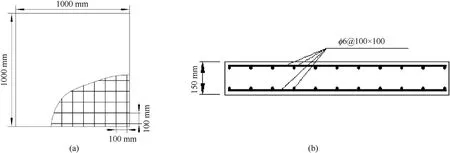
Fig. 7. Sectional view of the slab (reinforcement ratio is 0.41%): (a) Plan; (b) Section plan.

Fig. 8. Sectional view of the slab (reinforcement ratio is 0.79%): (a) Plan; (b) Section plan.
3.2. Slab preparation
According to the test plan, the test designed 12 ultra-earlystrength cement substrates with 3 types of reinforcement. Among them, there were 8 specimens on 28 days curing time, and 4 specimen on 24 h curing time. The size of the slab is 1000 mm×1000 m×150 mm.Except for the reinforcement ratio and curing age,the other parameters of the concrete slab are same.The 12 slabs were all cast with the same batch of UR50 ultra-earlystrength self-compacting high-strength materials. At the same time, all URCS steel bars are HRB400 steel bars with a diameter of 6 mm, which were divided into upper and lower layers, with aprotective layer of 15 mm.Fig.6,Fig.7 and Fig.8 shows the crosssection of the slab with different reinforcement methods. In addition, in order to compare the difference in anti-blast performance between URCS and NRCS, C40 ordinary concrete was used to pour an ordinary concrete slab with a size of 2000 mm × 2000 m×150 mm and a reinforcement method of 200×200 mm2[14],the compressive strength after curing for 28 days is 43.6 MPa[30].
3.3. Experimental setup
The test device is welded by 8 mm thick steel angles,the size of the support frame is processed according to the size of the slab,and ear-shaped fixing bolts are installed around it.During the test,place the URCS on the steel support frame,hang the bottom in the air to simulate the suspended state of the slab.Wooden bars were placed on all around the sides, between the specimen and the frame, to provide uniform supporting conditions and prevent direct impact damage on the specimen edges.The overall test device is shown in Fig. 9.

Fig. 9. Schematic diagram of test device.
The URCS were placed on the steel test device, and the processed TNT were fixed on the center of the slab surface with transparent tape.The test conditions are shown in Table 3,h0is the vertical distance from the geometric center point of the group charge to the surface of the reinforced concrete slab.

Table 3Test conditions and numbers.
4. Test results
4.1. Damage modes
Under the contact explosion, the compressive stress wave damages the front side of the URCS, and propagates to the back of the structure to form a strong tensile wave at this location,causing the back side to crack and spall.As the mass of the charge increases,the damage of URCS increases and shows different modes of damage.
When the mass of TNT is relatively small (200 g), due to the large number of micro-cracks in the URCS structure,the load can be dispersed through the micro-cracks effectively, which avoids or delays the generation of large cracks. Therefore, the compression wave generated by the explosion only causes a small amount of concrete on the front to be crushed and peeled off.When the shock compression wave continues to propagate to the back of the URCS and forms a strong tensile wave, since the tensile strength of the URSC is much smaller than the compressive strength, at this time,the concrete on the back of the URCS is spalled, and the failure mode is spalling,as shown in Fig.10(a).As the charge increased to 400 g, the shock compression wave caused a funnel-shaped crater on the surface of the URCS,and the area and depth of the concrete spalling area on the back increased. The failure mode at this time was crater and spall, as shown in Fig. 10(b). When the charge is greater than 600 g, the contact explosion produces a compression pulse load with a large peak value in a very short time. The reflection inside the URCS formed a strong tensile wave, which caused a large amount of concrete spalling on the surface of the structure,the sum of the depth of the spalling area and the depth of the spalling area is greater than or equal to the cross-sectional thickness of the reinforced concrete slab. At this time, the failure mode of URCS is breach and penetration failure, as shown in Fig.10(c).
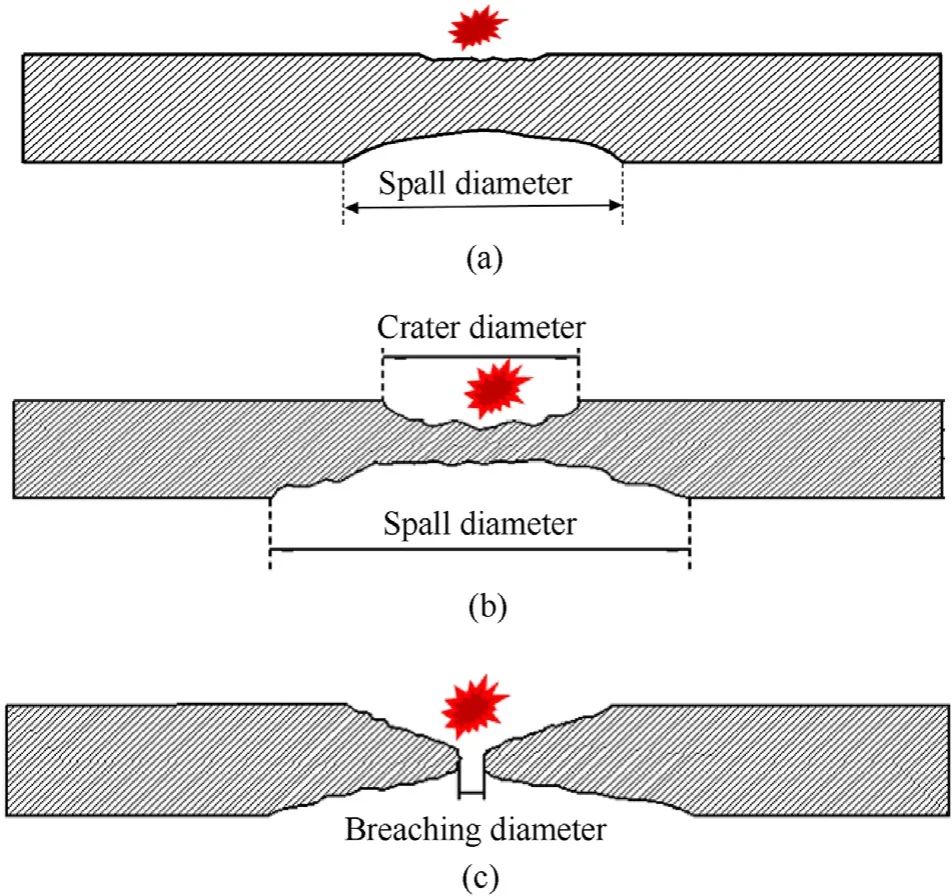
Fig. 10. Schematic diagram of failure mode: (a) Spall; (b) Crater and spall; (c)Breaching.
In order to quantify the URCS crater diameter,spall diameter and breaching hole diameter,the damage parameters of each specimen after the explosion were measured,considering the discrete type of measurement results, according to the measurement method shown in Fig.11. The damage parameters are measured from the four diagonal directions of the reinforced concrete slab, and the average of the four measurements is taken as the final measurement result,the measurement results of each specimen are shown in Table 4,whereCis the crater diameter,Sis the spall diameter,andBis the breaching diameter.

Table 4Test results.

Fig.11. Schematic diagram of measurement met hod.
4.2. Damage characteristics
4.2.1. NRC slab
NRCS as a control specimen(specimen number:NRD-0),due to the contact explosion load, the front of the slab was compressed and shattered by the stress wave, a crater was observed on the frontal surface. On the back side due to the reflected stretching wave,under the action of the reflected stretching wave on the back,concrete spalling resulted in a hole. NRCS is in a critically penetrating state, as shown in Fig.12.
4.2.2. URCS with 28 days curing
According to the test plan, a contact explosion test was carried out on the URCS with a curing time of 28 days. Two kinds of equivalent explosion tests of 200 g and 400 g were carried out with reinforcement ratio of 0.23% (Fig. 6). The damage characteristics under the explosive load of 200 g TNT is shown in Fig.13, a crater with a diameter of approximately 62 mm is observed on the surface of UD1-1,the concrete spalling on the back resulted in a spall with a diameter of about 352 mm. The steel bars are partially exposed in the crater without bending.As the charge mass increased to 400 g,a bigger crater than that of UD1-1 was observed on the frontal surface.The back concrete spalls and expands,and the diameter has increased 28% compared to UD1-1 approximately, as shown in Fig.14.

Fig.14. Test results of UD1-2: (a) Front; (b) Back.
Fig.15 shows the failure characteristics of the slab UD2-1with a reinforcement ratio of 0.41% (Fig. 7) when TNT is 200 g. It can be seen from the figure that the failure is similar to UD1-1.When the charge mass increased to 600 g,a bigger crater than that of UD2-1 were appeared on the frontal surface of UD2-2.Several cracks were observed on the front surface, and a breaching hole was observed.Annular and radial cracks were observed on the frontal surface. A spall was formed on the back side,and at the center of the back,the exposed steel bars form an angle of nearly 15◦with the horizontal direction of the slab as shown in Fig.16.
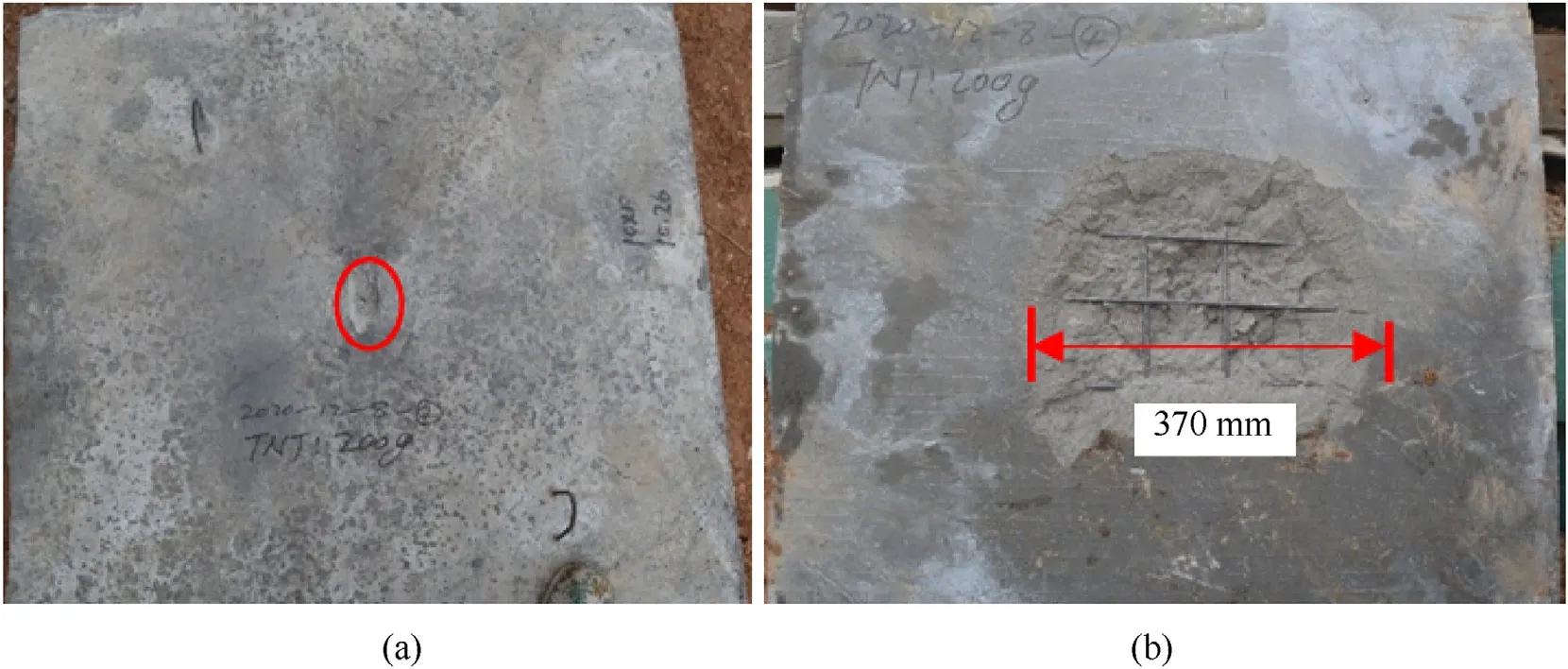
Fig.15. Test results of UD2-1: (a) Front; (b) Back.
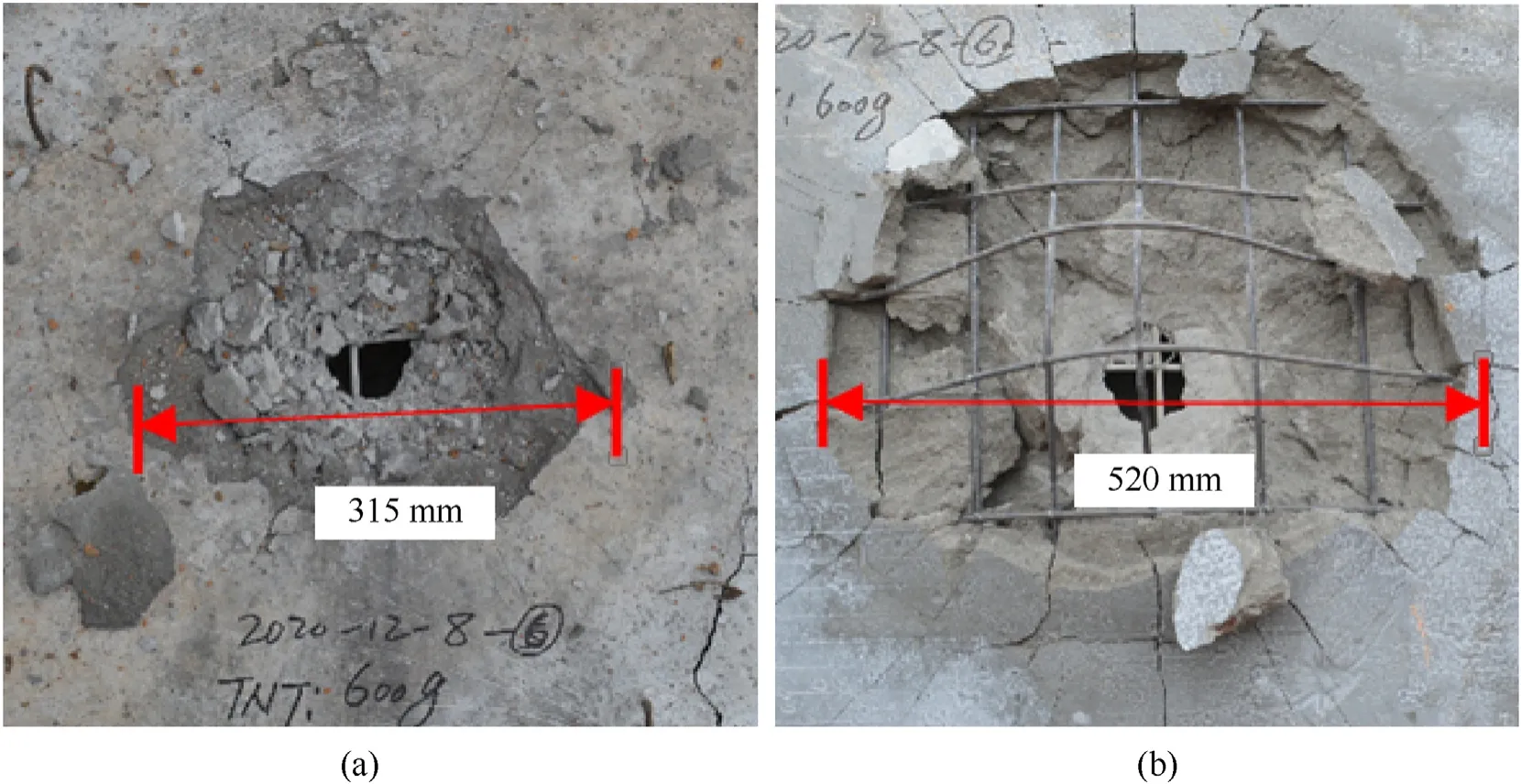
Fig.16. Test results of UD2-2V: (a) Front; (b) Back.
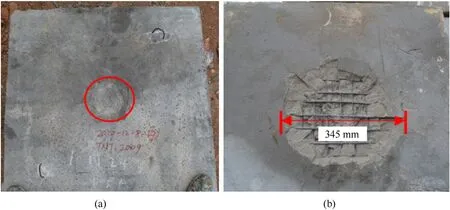
Fig.17. Test results of UD3-1: (a) Front; (b) Back.
When the reinforcement ratio is 0.79% (Fig. 8), the damage characteristics with 200 g TNT of UD3-1 are shown in Fig. 17. A crater with a diameter of 56 mm can be observed on the frontal surface of the slab,and a concrete spalling area with a diameter of 345 mm is formed on the back. The exposed steel bars are not significantly bent.The amount of explosives increased to 400 g,and the damage level of UD3-2 continued to increase, as shown in Fig.18.As TNT increases to 600 g,compared with UD3-1 and UD3-2,the larger mass of TNT caused the entire spall to detach away from the distal surface of UD3-3. Outside the spall, many annular and radial cracks were observed,a much wider cross-shaped crack than that of UD3-1 and UD3-2 was observed.The damage characteristics of UD3-3 are shown in Fig.19.When the charge mass increased to 800 g,UD3-4 was breached by the contact explosion generated by 800 g TNT.The steel bar is fracture,and on the distal surface,a large spall with a bigger diameter was observed,as shown in Fig. 20.
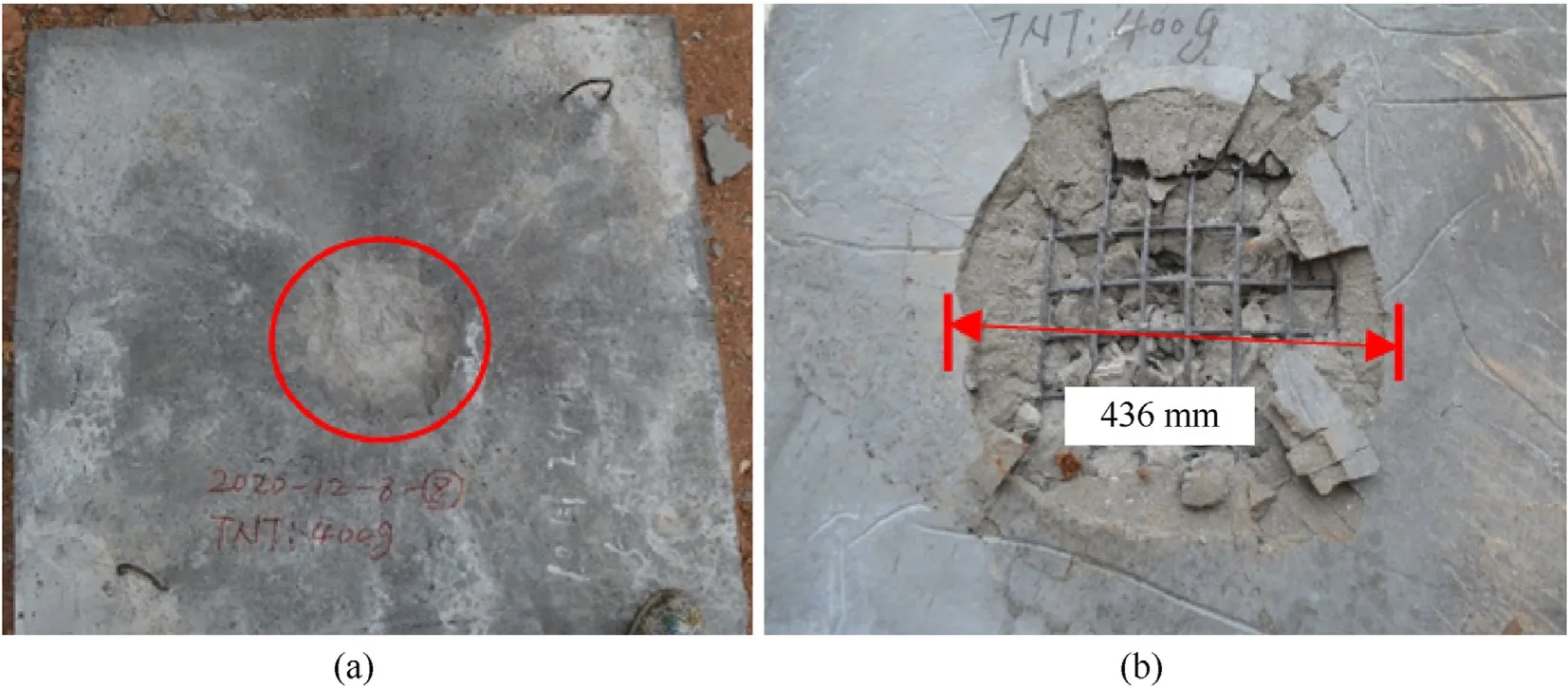
Fig.18. Test results of UD3-2: (a) Front; (b) Back.

Fig.19. Test results of UD3-3: (a) Front; (b) Back.
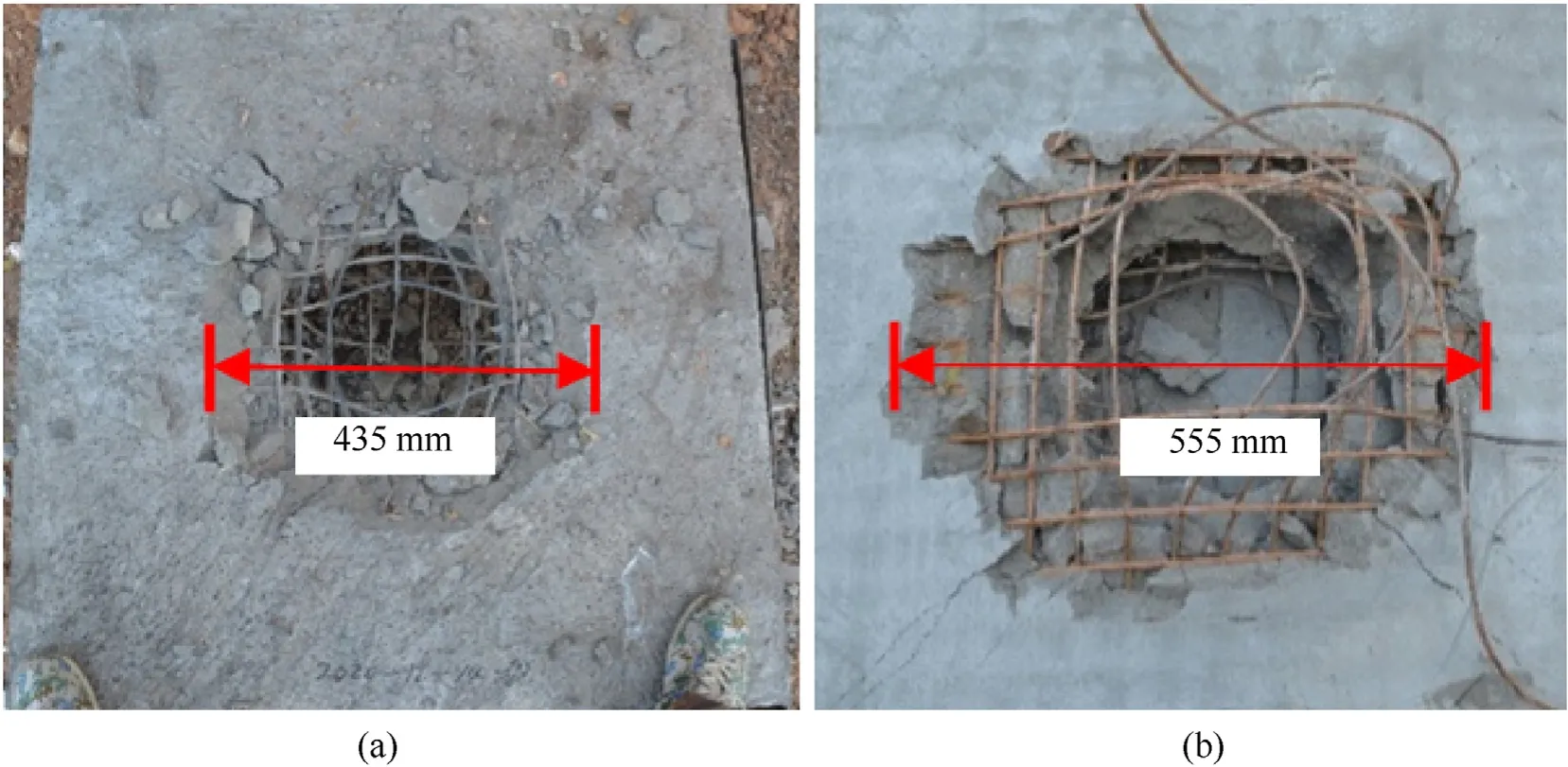
Fig. 20. Test results of UD3-4: (a) Front; (b) Back.
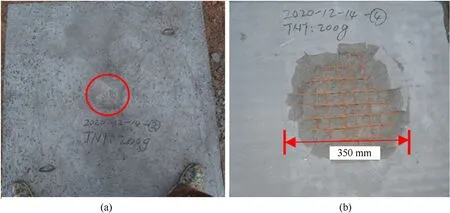
Fig. 21. Test results of UH3-1: (a) Front; (b) Back.
4.2.3. URCS with 24 h curing
In order to explore the effect of curing time on the antiexplosive performance of UR50 ultra-early-strength cementbased high-strength concrete slabs, a contact explosion test was conducted on the slabs cured for 24 h with the reinforcement ratio of 0.79%(Fig.8).When the TNT is 200 g,as shown in Fig.21,a small crater was observed on the surface of the slab of UH3-1,and a spallappeared on the distal surface.When the TNT equivalent increases to 400 g,in contrast to UH3-1,a bigger crater was observed on the frontal surface of the UH3-2. The strong tensile wave is formed when the stress wave propagates to the back side of the slab, the degree of concrete spallation increased, as shown in Fig. 22.
Fig. 23 shows the damage characteristics of UH3-3 when the TNT equivalent is 600 g, a cone crater with a diameter of 265 cm was observed on the frontal surface, with clear annular and radial cracks outside the crater. On the distal surface, a large bulge with circular edges was observed, representing the spall. As the TNT charge mass increased to 800 g,the damage characteristics of UH3-4 are shown in Fig. 24. UH3-4 was breached by the contact explosion generated by 800 g TNT.A larger crater on the frontal surface could be observed. Annular and radial cracks with substantial widths were observed outside the crater. On the distal surface, a large spall was observed.Outside the spall,in addition to the large cross-shaped crack, numerous radical cracks with wide widths were observed. Part of the steel bars at the center of the back are stripped from the slab.

Fig. 23. Test results of UH3-3: (a) Front; (b) Back.

Fig. 24. Test results of UH3-4: (a) Front; (b) Back.

Fig. 25. Comparison result of crater diameter.
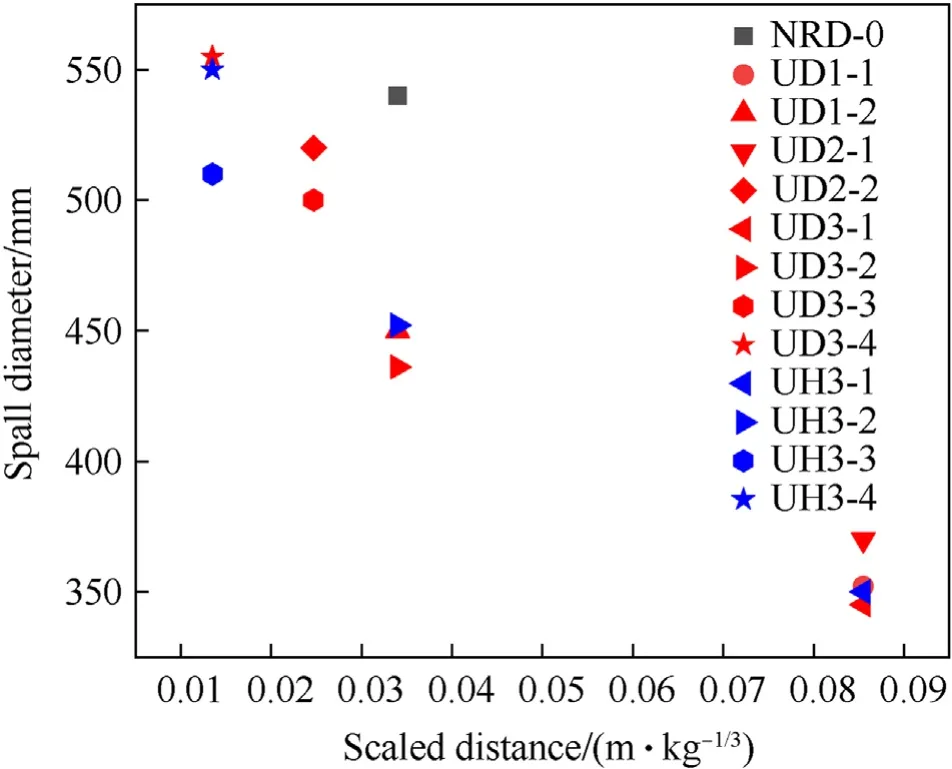
Fig. 26. Comparison result of spall diameter.
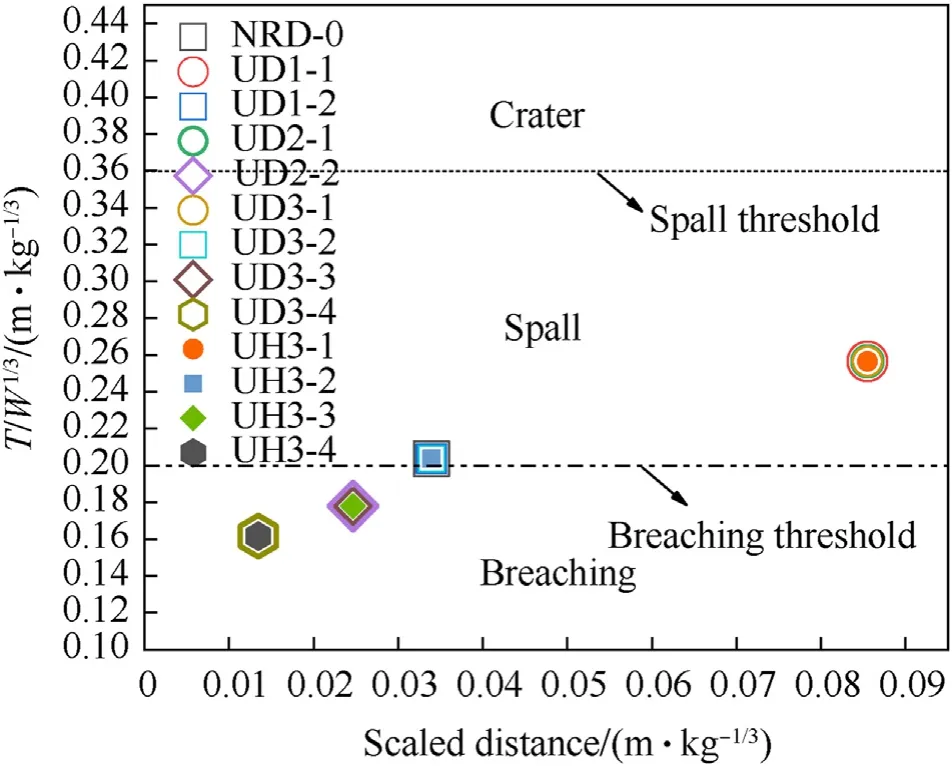
Fig. 28. Comparison with Morishita's formula.
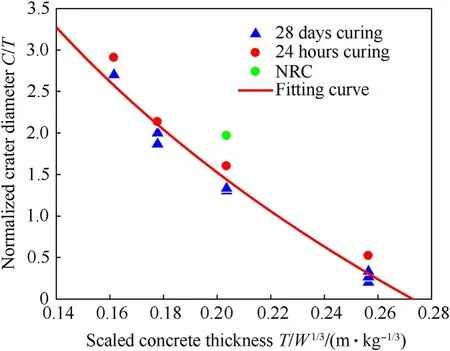
Fig. 29. Relationship between scaled concrete thickness and normalized crater diameter.
4.3. Comparison of damage
Fig.25 shows the comparison results of the crater diameters on the surface of the reinforced concrete slab under different conditions, and the comparison of the diameters of the spalling on the back is shown in Fig.26.The black icon represents the NRCS,the red icon and the blue icon represent the URCS with 28 days of curing and 24 h of curing,respectively.It can be seen from the figure that under the same TNT quality and curing time, the difference between the diameter of the crater on the surface of the reinforced concrete slab and the diameter of the spall on the back of the slab with different reinforcement ratio is not obvious. Therefore, the reinforcement ratio has little effect on the anti-blast performance of the reinforced concrete slab. At the same scaled distance, NRCS has the largest crater diameter and spall diameter,this result shows that URCS has better anti-knock performance than NRCS.
Fig. 27 shows the comparison results of URCS damage parameters with different curing time when the reinforcement ratio is 0.79%,it can be seen from the figure that,the damage parameters of the URCS with a curing time of 24 h are not significantly different from that of 28 days. Therefore, we believe that the anti-blastperformance of the URCS with a curing time of 24 h can reach the URCS with a curing time of 28 days.
5. Damage analysis
5.1. Damage mechanics
The contact explosion can release huge energy in a very short time and in a limited space,causing a pressure jump in the air and the surface of the structure around the explosion point. The explosion will produce a compression pulse load with a higher peak value and a shorter action time at the center of the URCS. This compression wave acts on the URCS structure.
The special structure of URCS can disperse the load through the micro-cracks group to avoid or delay the generation of large cracks.Therefore when the mass of TNT is relatively small (200 g), the compression wave generated by the explosion only causes a small amount of concrete on the front to be crushed. When the shock compression wave continues to propagate to the back of the reinforced concrete slab, it will form a reflected tensile wave at this position after reaching the back, because the tensile strength of URSC is much smaller than the compressive strength, the local spalling failure is mainly determined by the dynamic tensile strength of concrete.The dynamic tensile stress is mainly provided by the reflected stress σrin the concrete. The concrete spalling criterion can be expressed as [31].
In the formula, η is the dynamic coefficient of concrete, with a value of 1.2[32],and σtis the quasi-static tensile strength of ultraearly-strength concrete.When the tensile strength of the reflected wave reaches the yield strength of URCS, the radial and circumferential cracks caused by the tensile wave will appear on the back of the reinforced concrete slab. When these cracks are connected and penetrated,this part of the concrete will be removed from the reinforced concrete slab. As the mass of TNT increases, the explosion crater on the front and the spall area on the back will penetrate up and down to form a breaching hole with a certain diameter.
5.2. Failure predictions with existing methods
In order to evaluate the damage degree of concrete components under explosive loads, many scholars had carried out a lot of experiments, on this basis, an empirical formula that can quickly evaluate component damage grades is established.However,due to the differences in the test conditions and the mechanical properties of the specimens, there are some limitations in the scope of application of these formulas.
According to the results of data analysis of 334 explosion tests,McVay [33]found that the damage level of the concrete slab is closely related to the size ofT/W1/3andR/W1/3, where T is the thickness of the slab and R is the height of the explosive core.Based on this discovery, an empirical formula can evaluate the damage level of concrete slabs under near-explosion were established.Since the test scenario of the empirical formula established by McVay is a close explosion,in the close-range explosion test,a large amount of energy is consumed when the shock wave propagates in the air. However, the contact explosion is the shock wave directly acting on the slab component,there is a greater difference between the two cases. So we have no comparison with McVay's empirical formula.
In view of the fact that McVay's formula cannot evaluate the damage level of components under contact explosion effectively,Morishita et al. [34] have perfected and supplemented McVay's formula,and established an empirical formula that can predict the damage of concrete slab components under contact explosion,the specific definition is as follows:
Fig.28 shows the comparison between the experimental results of this paper and the empirical formula of Morishita et al.According to the research results of Morishita, UD1-2 and UD3-2 should be critical penetration,and the test result in this article was spall,the penetration damage threshold of ultra-early-strength concrete slabs is underestimated with this formula. When the charge is 600 g,the URCS is a critical penetration,which is different from the penetration predicted by Morishita et al. The NRCS and the destruction mode of URCS at 200 g and 800 g are in good agreement with the results predicted by Morishita et al. The damage mode of NRCS and URCS under 200 g and 800 g explosion loads are in good agreement with the results predicted by Morishita et al.The main reason for the above results in the analysis is that the ultraearly-strength concrete is ultra-high-performance concrete,which has strong resistance to explosive loads.
5.3. Prediction of crater and spall diameter
In the process of crater and spalling of the concrete slab under the explosion load, the secondary damage caused by the concrete fragments cannot be ignored, It will also cause damage to nearby personnel and equipment. Accurately predicting the crater diameter and spalling diameter is also of great significance for evaluating the anti-explosive ability of concrete slab components. Relevant scholars by normalizing the crater diameterCand spall diameterSof the concrete slab under the contact explosion to the thickness of the slabTrespectively.Then normalize the charge mass ω and plate thickness to getT/ω1/3. Finally, the formulas that can predict the crater diameter and spall diameter of the concrete slab under contact explosion with the change of the charge is obtained[9,10].
5.3.1. Prediction of crater diameter
According to the crater diameter test data, the relationship between the normalized crater diameterC/Tand the scaled concrete thicknessT/W1/3is shown in Fig.29.It can be seen from the figure that the crater diameter of URCS is in good agreement with the fitting formula, but there is a difference between NRCS and this formula.Therefore,this empirical formula is suitable for predicting the crater diameter of URCS. The relationship between the size of the front crater and the amount of charge is given by data fitting.The fitting formula is as follows:
In the formula,Cis the crater diameter,Tis the thickness of the reinforced concrete slab,andWis the charge mass.
5.3.2. Prediction of spall diameter
Because of the strong reflection of stretching waves, different degrees of spallation will appear on the back of the slab.Predicting the spall size with the method in the previous section, the prediction result is shown in Fig. 30. Except for the poor agreement between the spall diameter of NRCS and the fitted curve,the other points have higher agreement. This formula is suitable for predicting the spall diameter of URCS,the fitting formula is as follows:

Fig. 30. Relationship between scaled concrete thickness and normalized spall diameter.
In the formula,Sis the spall diameter,Tis the thickness of the reinforced concrete slab,andWis the charge mass.
6. Conclusions
This paper studies the anti-explosion performance of URCS through contact explosion test. At the same time, it explores the influencing factors such as reinforcement ratio and curing time.Through the macroscopic phenomenon and parameter analysis of the test, the following conclusions are drawn:
(1) The anti-explosion performance of URCS is stronger than that of NRCS, with the charge mass of 400 g TNT, the crater diameter and spall diameter of URCS are reduced by 20%and 16.7%respectively compared with NRCS.But the effect of the reinforcement ratio of the URCS on the anti-explosive performance is not obvious. The anti-explosive performance of the slab is determined by the characteristics of the material medium.
(2) Under the same reinforcement ratio and charge mass, the URCS cured for 28 days and it cured for 24 h share a similar damage modes. For the two types of URCS under different curing times, the difference in crater diameter does not exceed 9%, and the spall diameter does not exceed 4%respectively.
(3) Although the empirical formulae proposed by Morishita et al.are applicable for concrete slabs under contact explosion,the prediction of the spall threshold and breaching threshold for URCS were inaccurate.It may be that the ultra-early-strength concrete material can effectively disperse the shock wave through micro-cracks and avoid damage by the shock wave.A modification of the existing formulae to quickly predict the damage threshold of URCS under contact explosion is necessary and will assist with the development of engineering guidelines for blast resistance.
(4) Based on the parametric analysis of the crater diameter and the spalling diameter, an empirical formula that can predict the crater diameterCand the spalling diameterSis established,and the empirical formula is in good agreement with the URCS test results.
Declaration of competing interest
The authors declare that they have no known competing financial interests or personal relationships that could have appeared to influence the work reported in this paper.
Acknowledgments
The authors acknowledge the financial support from National Natural Science Foundation of China (Grant No. 11302261 and No.11972201). This paper is also supported by the project of Key Laboratory of Impact and Safety Engineering (Ningbo University),Ministry of Education. The project number is CJ202011.
杂志排行
Defence Technology的其它文章
- A review on lightweight materials for defence applications: Present and future developments
- Study on the prediction and inverse prediction of detonation properties based on deep learning
- Research of detonation products of RDX/Al from the perspective of composition
- Anti-sintering behavior and combustion process of aluminum nano particles coated with PTFE: A molecular dynamics study
- Microstructural image based convolutional neural networks for efficient prediction of full-field stress maps in short fiber polymer composites
- Modeling the blast load induced by a close-in explosion considering cylindrical charge parameters
